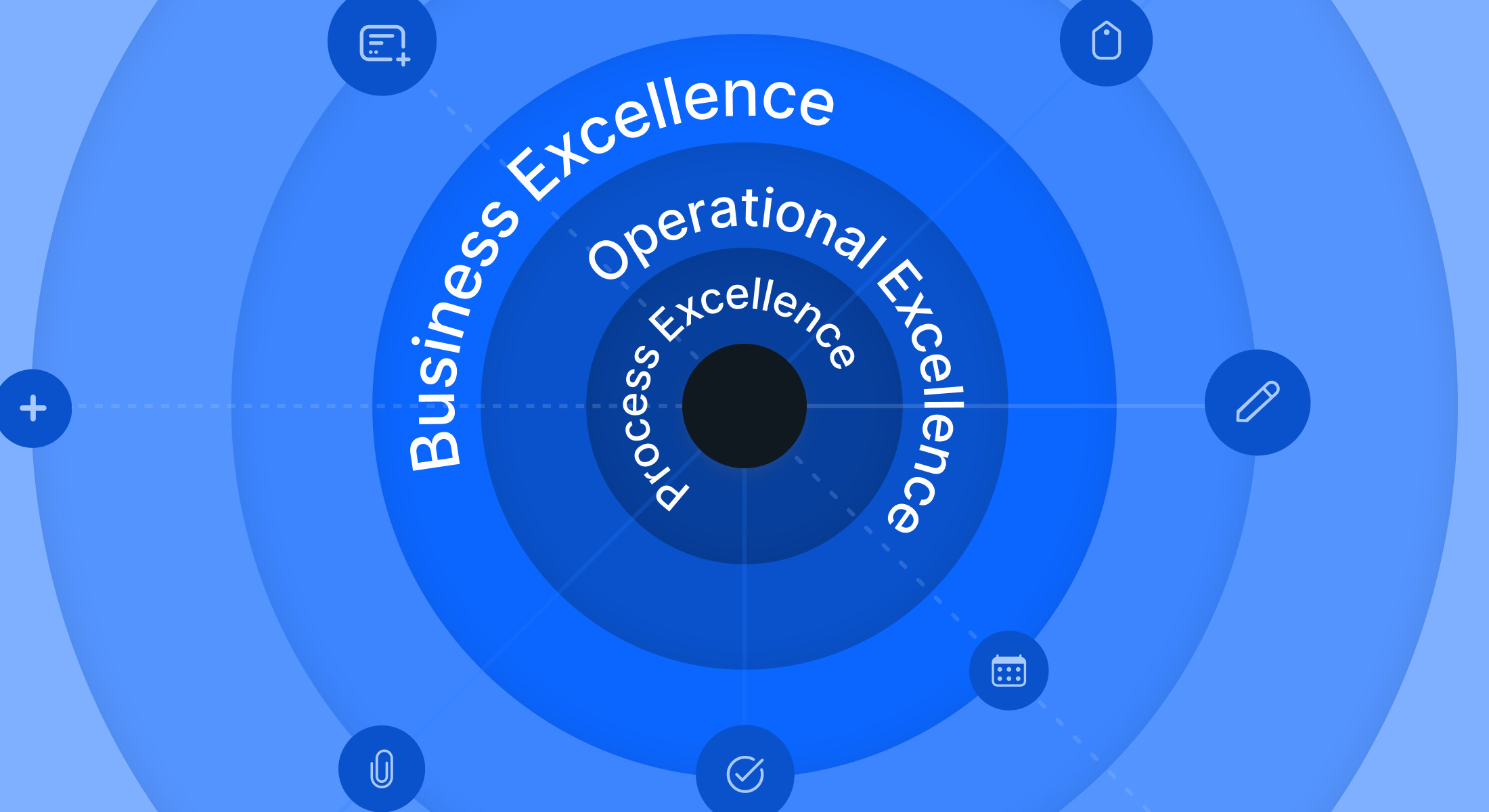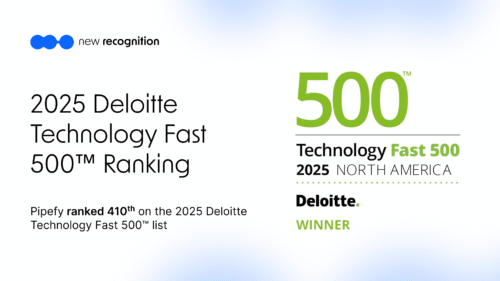
Process excellence (PEX) is the quality standard businesses use to achieve their goals and distinguish themselves from competitors. PEX advocates understand that the business is only as good as the processes within it.
What is (business) process excellence?
Process excellence is a strategy for adapting business processes in order to maximize productivity and efficiency. To achieve process excellence, a process is assessed, modified, and tested until the process meets a goal. It also describes a quality standard against which processes are measured. It is also sometimes referred to as business process excellence.
The Definitive Guide to Business Process Automation

What factors determine process excellence?
Achieving business process excellence depends on a number of factors. These factors will vary from business to business and from process to process, but, in general, the qualities that determine process excellence are:
- Efficiency
- Productivity
- Accuracy
- Speed
- Visibility
- Security and compliance
- Consistency (little or no variance)
- User experience (for employees and customers)
- Alignment with business strategy
- Ability to meet targets and achieve goals
How to achieve process excellence
Achieving process excellence requires a structured and thorough approach to process improvement, one that ensures consistency, improves visibility, and defines accountability. The following framework will help you reach these objectives.
Step 1: Define the target process
Identify the process you want to improve, and then prepare to get into the weeds. The overall goal of business process management initiatives is to create optimized and orchestrated versions of all the processes that take place within the organization. However, process excellence is achieved by highlighting a single process and getting it right before moving on to the next process.
Step 2: Create a process map for the as-is process
In order to optimize your target process, zoom into the flow of the work and map key steps, including:
- Starting point – triggers the process or workflow
- Outcome(s) – the end results of the process.
- Inputs – information, data, time, effort.
- Systems – ERPs, CRMs, or point solutions
- Handoffs – instances where work changes hands.
- Integrations – points at which data crosses system or app barriers.
If you’re new to process mapping, here are some resources that can help you get started:
- Guide to Flowchart Symbols
- Step-by-Step How to Map a Process
- Process Improvement Basics
- How to Automate Business Processes
Step 3: Assess the as-is process
Before you can improve the as-is process, you need to collect some data on its current performance. The following questions will help you identify the changes needed to optimize the process.
- Is the target process an unstructured or structured process?
- What is the primary performance metric or KPI for the process?
- How is that metric or KPI measured?
- To what extent is the as-is process meeting (or failing to meet) this metric?
- What elements of the as-is process are contributing to its performance?
- Where are the improvement opportunities?
Step 4: Create the to-be process
Create a process map for the optimized or to-be version. How should the new version of
the process be organized? Will it include new technology or software? Does it require
cross-team collaboration?
Step 5: Test the new version of the process
Run the to-be version of the process on a limited scale or with only a few users. Keep an
eye out for data or collaboration silos that may appear. These are most common when
information is shared between people, tasks are handed off from one party to another, or where data moves across system boundaries, such as when apps or databases are integrated.
Step 6: Review the results
Determine if the to-be version of the process meets performance requirements. If it does not, try to understand why. Revise the process and try again until it achieves the target quality standard.
Step 7: Implement the to-be process
Train your team (and any involved external parties) on the new process to prepare them for its use. If the new version of the process introduces new apps or systems, make sure your team feels confident about using them.
Step 8: Monitor and modify as necessary
Ensure you have enough visibility into your process to easily monitor its performance and quickly identify any issues that emerge. Some process automation software options provide multiple views and notifications that can help you stay a step ahead of bottlenecks, SLAs, and deadlines. Look for no-code options that make it easy to build customized dashboards that put your most important process metrics front and center.
Process improvement tips
In addition to taking a structured approach to process excellence, there are a few tried-and-true tactics that can help you build and optimize any process or workflow.
Establish process ownership. Having a designated process manager will add accountability and ensure that someone is paying attention to the process, even as management priorities shift.
Realize that what gets measured gets done. Bring more accountability to process excellence initiatives by clearly defining KPIs and metrics early. Determine a regular schedule for monitoring and reporting performance against these metrics.
Identify all variables in the equation. Every process is an equation made up of a combination of variables. Some of these are fixed variables, which means they are beyond your control. Instead of wasting time and resources on fixed variables, focus on what you can control.
Capture and apply feedback from users and customers. In many cases, the primary driver of process excellence is efficiency or cost savings. But processes also impact user experiences and customer experiences. Make sure your process improvements are informed by the people who rely on or who benefit from these processes.
Automate to reduce errors and improve speed. Automation plays an increasingly important role in process improvement efforts. Automation helps teams avoid errors, speeds up response rates, and maintains data consistency across the tech stack. Look for opportunities to automate tasks and workflows within the process.
Process excellence vs. other terms
Process excellence is sometimes confused with some related terms, so it might be helpful to define the differences between them. These include operational excellence, business excellence, and digital excellence.

What is operational excellence?
Operational excellence is a discipline that aims to improve all aspects of an organization’s operations, from the bottom up. Operational excellence initiatives achieve change by addressing issues with the company’s culture or technology and then building on those changes.
This discipline is broader in focus than process excellence and typically involves
- Building an infrastructure for changes.
- Developing the discipline to complete actions and processes consistently.
- Shifting team focus from product quality to customer experience.
- Prioritizing process effectiveness and business agility.
- Deploying a system of engagement that solves process gaps and data silos.
- Achieving stack extensibility to get the most out of existing apps and systems.
In the end, operational excellence is about changing the culture, perceptions, and mindsets of everyone in the organization. It’s a comprehensive strategy that can have a profound impact on the business.
What is digital excellence?
Digital excellence refers to the use of technology and data to achieve process excellence. As tasks, activities, and workflows become increasingly digitized, businesses are adopting standards of digital excellence. These standards help them determine whether or not they are using technology and data as efficiently and effectively as possible.
What is digital process excellence?
Digital process excellence is the degree of effectiveness and efficiency for a process that includes digital elements such as apps, software tools, collaboration tools, and databases. Put another way, digital process excellence refers to the quality of the digital versions of your business processes.
For example, the inputs for these processes may include requests or intake forms that arrive via email, forms, or through a collaboration tool such as Slack. This information is converted into data, which teams access and manage through another type of software such as an ERP, CRM, HRIS, or point solution.
Digital processes are the most common form of business processes today, so achieving digital process excellence applies process excellence principles but with an emphasis on the digital aspects of the process.
Deliver business process excellence with no-code automation
Both IT and business teams play critical roles in process improvement, regardless of the type of business process. Business teams understand how the processes should work, and how these processes impact users, customers, and business goals. IT teams ensure process consistency and security by making sure that new and existing processes are woven into the overall business process fabric.
No-code BPA software provides a suite of features that help business and IT teams collaborate, orchestrate processes, and achieve process excellence. Business teams get an intuitive visual interface that lets them improve processes quickly and easily. IT teams get a tool that integrates with the existing stack, amplifies current capabilities, and simplifies enforcement of security and compliance.










